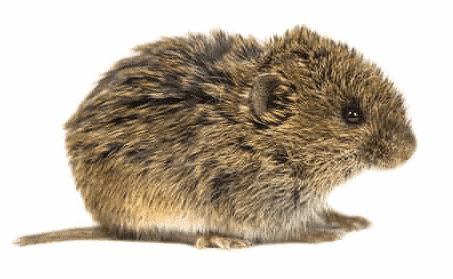Premier Vole Control Utah County Specialists
Premier Vole Control Utah County Specialists
Blog Article
Efficient Insect Control Solutions for Vole Infestations

In the realm of pest control, vole invasions present an unique obstacle that requires a calculated strategy. By delving into the intricacies of vole habits and exploring a variety of control techniques, an extensive bug administration plan tailored to these elusive animals can be crafted. From all-natural repellents to innovative trapping strategies, the arsenal versus vole infestations is multi-faceted.
Comprehending Vole Actions
Voles, little rodents generally located in gardens and areas, exhibit distinctive behavior patterns that are vital to comprehend when carrying out pest control steps - vole control utah. These creatures are respected miners, developing an extensive network of passages underground where they nest, store food, and seek shelter from predators and stormy climate. Voles are herbivores and largely prey on lawns, roots, seeds, and bulbs, making gardens and fields optimal habitats for them
One trick behavior of voles is their quick price of reproduction. Ladies can give birth to several clutters each year, with litter sizes varying from 3 to 6 dogs. This high reproductive capacity enables vole populations to rapidly increase, causing problems if left unattended.
Recognizing vole actions also involves acknowledging their patterns of motion and foraging. Voles produce surface runways in verdant areas as they travel in between their burrows and food sources. By observing these runways and the locations of burrow entryways, bug control professionals can determine high-traffic areas and strategically location traps or deterrents to efficiently handle vole populaces.
All-natural Repellents and Deterrents
With an understanding of vole behavior as a structure, discovering all-natural repellents and deterrents ends up being necessary in successfully managing vole problems in areas and gardens. In addition, integrating predator pee, such as that of foxes or coyotes, around the garden perimeter can create an all-natural obstacle that signals threat to voles, urging them to stay away.
Additionally, making use of castor oil-based repellents can interfere with vole tunnels as they discover the smell and taste undesirable, prompting them to move. Mulching with products like crushed rock, lava rocks, or coarse sand can also deter voles as they dislike excavating with these harsh substances. Executing a mix of these all-natural repellents and deterrents can assist efficiently manage vole populaces in a safe and sustainable way, securing plants and yards from vole damage.
Capturing Techniques for Voles

Break traps are made to kill voles promptly upon activation. These catches ought to be positioned in areas where voles are known to travel, such as near burrow entryways or along their paths. It is necessary to check snap catches consistently and take care of any captured voles promptly to ensure the effectiveness of the capturing process.
Live traps are a much more gentle option for those who want to catch voles without damaging them. Once a vole is caught in a live catch, it can be securely transported to a various area and released unharmed. Live catches need to be checked often to stop stress or harm to the recorded voles.
When establishing traps for voles, it is critical to consider their behavior and routines to increase the probability of success (vole control service). By utilizing the appropriate capturing techniques, vole populations can be efficiently taken care of, decreasing the damages they trigger to agricultural and yard locations
Applying Physical Obstacles
To even more fortify the protection against vole invasions, the critical execution of physical barriers becomes a proactive action to guard agricultural and garden areas. Physical obstacles such as cable mesh, equipment fabric, or fences can be installed below ground to prevent voles from tunneling into gardens or areas. Burying these barriers at the very least 12 to vole control service 18 inches deep and angling them external can efficiently deter voles from tunneling right into the safeguarded location. Additionally, creating fencings with tiny mesh size at the base can hinder the voles' capacity to access the greenery over ground degree.
Furthermore, the use of tree guards or trunk wraps constructed from metal or plastic can shield tree trunks from vole damages throughout winter season months when other food sources are limited. These guards need to expand above the expected snow line to avoid voles from gnawing on the bark. Regular evaluation and maintenance of these barriers are vital to guarantee their continued effectiveness in deterring vole intrusions and safeguarding useful crops and plants.
Integrated Insect Administration Approaches
Integrating different pest control techniques, consisting of organic controls, habitat control, and monitoring, develops the basis of reliable Integrated Pest Management methods for resolving vole invasions. Organic controls include presenting all-natural predators of voles, such as owls or snakes, to the affected location to help reduce vole populaces.
Final Thought
In final thought, reliable insect control options for vole problems include recognizing vole habits, utilizing natural repellents and deterrents, executing trapping techniques, and setting up physical barriers. Integrated bug administration techniques can likewise be utilized to resolve vole infestations comprehensively. By combining these methods, property owners can properly mitigate and handle vole populations without the requirement for excessive pesticide usage.
With an understanding of vole behavior as a foundation, exploring natural repellents and deterrents becomes important in efficiently taking care of vole infestations in areas and gardens. Executing a combination of these natural repellents and deterrents can help efficiently handle vole populations in a lasting and non-toxic fashion, securing crops and yards from vole damage.
Integrating numerous bug control methods, consisting of biological controls, habitat manipulation, and tracking, creates the basis of effective Integrated Insect Monitoring methods for attending to vole infestations. Organic controls involve presenting all-natural killers of voles, such as owls or snakes, to the damaged area to assist reduce vole populations (vole control utah).In final thought, reliable bug control options for vole infestations entail comprehending vole actions, making use of natural repellents and deterrents, implementing trapping techniques, and setting up physical obstacles
Report this page